Fr. Giuseppe Cinà, M.I.
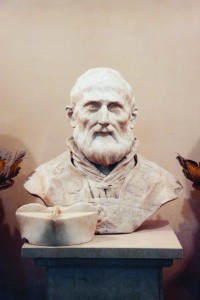 Those who know about the life of St. Camillus also know about the tension that at a certain point was created between him and Father Philip, his spiritual director. They also know that this conflict was subsequently remedied and to such a point that these two ‘saints’ even came to relate to each other in a more intense and mature way.
Those who know about the life of St. Camillus also know about the tension that at a certain point was created between him and Father Philip, his spiritual director. They also know that this conflict was subsequently remedied and to such a point that these two ‘saints’ even came to relate to each other in a more intense and mature way.
Given that it also falls to us – alas, quite often! – to experience situations of contrast and resentment, and these conflicts are not always dealt with in a satisfactory way, I would to take advantage – so to speak – of the story of Camillus and Philip in order to profit from it for our own sad experiences.
Let us briefly remember the facts. It was Camillus that took the initiative in forming a relationship with Philip. He had come to Rome some years previously when he had still not achieved peace with his conscience as regards his vow to become a Capuchin friar. After his ‘conversion’ of 2 February 1574 he had tried in a serious way twice and on both occasions the irritating and mysterious wound on his foot had impeded him.
He thus finally realised that God did not want him to become a friar. So what should he do? He understood what he had to do when he was admitted to St. James’ Hospital of Rome: God wanted him to serve those poor people. And this time he dedicated himself with all of his heart and to such an extent that…he had a career. He was appointed ‘master of the house’, that is to say he was responsible for the services of the hospital and for the personnel. He performed this post with such diligence and commitment that he developed an extraordinary tenderness towards the patients.
However he saw how badly these sick people were cared for by the so-called ‘servants’, people who had been hired by chance and were there just for the money. After repeated and vain attempts to improve the situation, during the night of 14 August 1582 he planned the institution of a ‘company of pious and good men who not for gain but voluntarily and for love of God would serve those sick people with that charity and lovingness that mothers usually have for their sick children’.
However the administrators of the hospital did not in the least like this initiative and to such an extent that Camillus began to lose hope and to think that he was being stubbornly presumptuous. Finally it was the Lord himself who encouraged him. First in a ‘dream’ and the, some time later, when he was awake, Christ on a Crucifix encouraged him, but not without a certain rebuke: ‘Tell me what afflicts you, pusillanimous one? Go one with your undertaking for I will help you, for this is my work and not yours’. Thus encouraged, Camillus returned in a decisive way to his project.
The Encounter with St. Philip
In the meantime, although he had converted to God or rather specifically after that turning point, he realised that he needed a spiritual guide. He found this guide in St. Philip Neri and his ‘Oratory’, a lively milieu that was rich in spirituality. Father Philip, who was very attentive to the world of the suffering and the poor, was happy to welcome him, seeing that he was so well involved in service to the sick.
Camillus’ commitment was to go to Philip for confession and spiritual direction every Saturday and on the eve of feast days. For eight years he was faithful to his promise. And greatly did he gain from it.
But at a certain point between Philip can Camillus there arose a fracture. The agreement lasted until the project that Camillus and his companions were promoting in St. James’ Hospital was called into question by Father Philip himself.
What had happened? As I have already observed, the initiative of Camillus had not been congenial to the gentlemen responsible for St. James’ Hospital. Although they appreciated Camillus’ work for the patients, the idea that he might even found a sort of association to renew the way the hospital was managed was seen by them as bizarre. And as they did not manage to remove this idea from the head of that ‘terrible brain’ Camillus, and knowing the influence that Father Philip had over him, they informed the latter of what was happening at St. James’ Hospital.
Philip also agreed that the undertaking begun by Camillus and his companions would be a failure. He told Camillus what his thoughts were on the matter in very clear terms: he should abandon any idea of founding a company; he should attend rather to himself, to his own spiritual life; and he should look after the sick, which was already a great deal. Indeed, he once said to him in a rude way that as he was ‘an idiot and without letters, he would never be suited to governing people who had come together’.
Camillus felt the blow but replied that he could do nothing about it: the idea of the Company was not his; it had been planted within him by Another, and he could not rid himself of it.
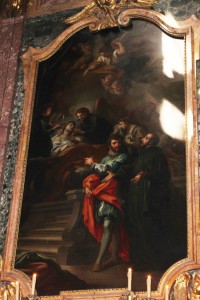 Philip could not be moved and thus told him to abandon the project or he and his companions would have to find another confessor.
Philip could not be moved and thus told him to abandon the project or he and his companions would have to find another confessor.
At this point the two ‘saints’ no longer understood one another. This was a very painful blow for Camillus who, however, was not able to abandon the project because he was convinced that it was Jesus Christ himself who wanted it. Even though his heart was broken, he accepted realities as they were and separated himself from his beloved confessor and father.
The Meaning of a Conflict
What was the meaning of the conflict that exploded between Camillus and Father Philip? In a certain sense, given the diversity of the two personalities, one could also say that this tension would have exploded sooner or later. And yet these two figures, years later, met each other again and understood one another. This time it was Philip who looked for Camillus. At a distance he had continued to follow Camillus and his work. And he had been edified by it. When he had become old, he went to visit Camillus in his home at the Church of St. Mary Magdalene in Rome in order to say to him: ‘The success of this work really seems to me to be a miraculous thing, because it is not the outcome of human means and learning!’
Why had Philip changed idea? The two most recent biographers of these two saints observe how Philip, at the moment of dismissing Camillus from his guidance, had himself obtained for him a successor in the person of the oratory figure Antonio Talpa. He must have perceived, in all likelihood, that the stance that Camillus had adopted was not pure obstinacy. Perhaps, inside that granite head, which was so much like Maiella and Gran Sasso, there was something that had escaped him. And if, on the one hand, he did not feel like guiding someone who was not prepared to listen to him, on the other he had good reasons for believing that in this case a person who was more internally free was needed to assess the position of Camillus. He felt too involved with the judgements of the ‘gentlemen guardians’ of St. James’ Hospital.
Every Encounter is a Clash…
And here we come to the ‘lesson’ that we could draw from this clash: in general one can say that we too easily fall back on ourselves when we have a clash with someone. With excessive levity, we think that the respective positions cannot be reconciled. As a result, once the contrast has occurred, we believe that there is nothing else to be done than detach ourselves in a Salomonic way from the other person or from other people: ‘Let’s form another.. .party, another faction, and let’s not talk about it any more!’ Perhaps such is really the case: there is nothing else to be done than allow each person to go on their own way.
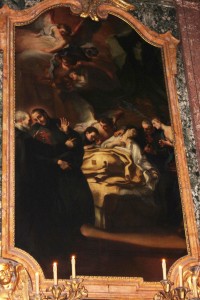 And yet this is not always true; indeed in the majority of cases the opposite is true, that is to say twe must meet each other again, like Philip and Camillus, because in essential terms this is what conflict inclines us towards: ensuring that we meet each other again in a more authentic and deeper way.
And yet this is not always true; indeed in the majority of cases the opposite is true, that is to say twe must meet each other again, like Philip and Camillus, because in essential terms this is what conflict inclines us towards: ensuring that we meet each other again in a more authentic and deeper way.
Why is this? Because contrasts, conflicts, misunderstandings and tensions are a part of the interplay of life. The Bible – both the Old and the New Testaments – is full of tensions and struggles. Many of the most eminent figures of the Bible – but one could say the same thing about the history of the Church – only after clashes, struggles, conflicts and tensions achieve their ‘truth’, that is to say they become authentically themselves and thus fertile for their communities or for the human and ecclesial community as a whole. An example for everyone could be the mysterious ‘wrestling of Jacob with the Angel’ at the River Jabbok, which is spoken about in the Book of Genesis (32:23-33). And it was specifically after this ‘wrestling’, as a result of which Jacob was wounded ‘on his hip joint’, that he received the new name ‘Israel’ which expressed his true identity and his mission: the father of twelve children, that is to say the twelve tribes of the people of the Covenant.
Camillus and Philip in their encounter-clash, as well, came out of it both wounded, but specifically for this reason they were regenerated and achieved a deeper and more mature truth: Philip ‘grew’ in his understanding of the design of God inasmuch as he was able to see that it was truly God who was at work in Camillus. Camillus, in his turn, realised that this work was truly the outcome of the free and sovereign action of God because he, a man of a ‘most terrible brain’, and ‘idiot without letters’, as St. Philip had defined him, really could not have achieved on his own something of this kind.










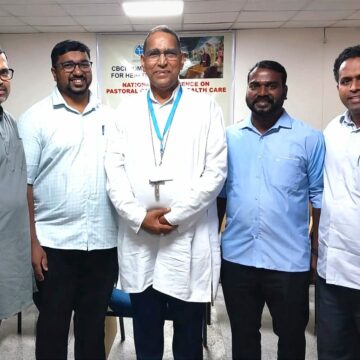


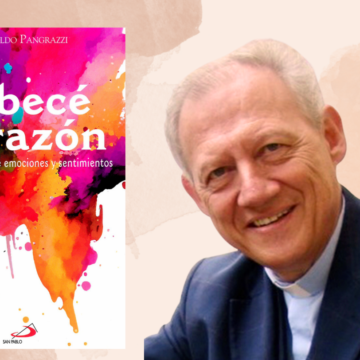
Camillians on Facebook
Camillians on Twitter
Camillians on Instagram